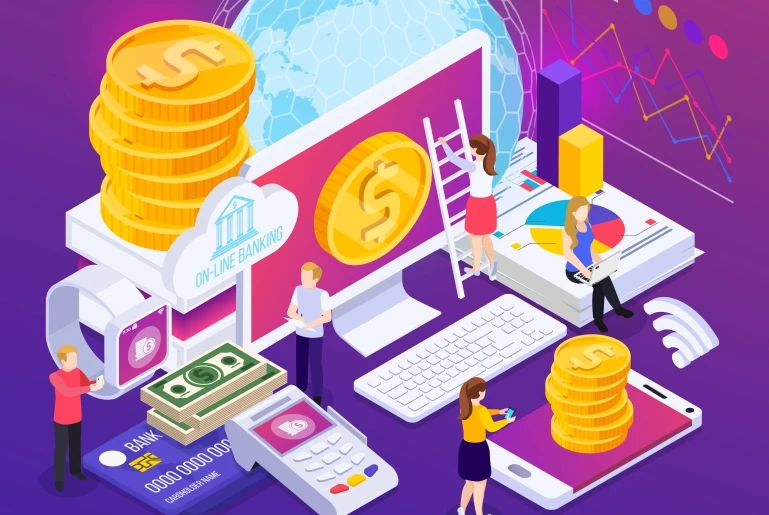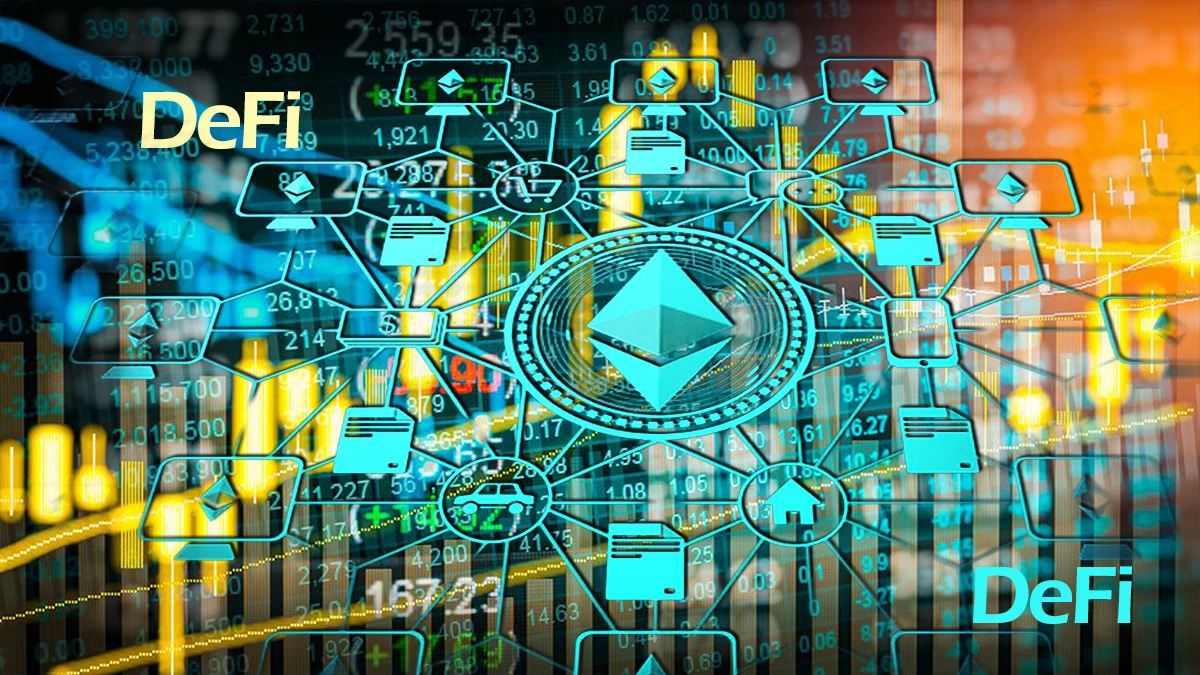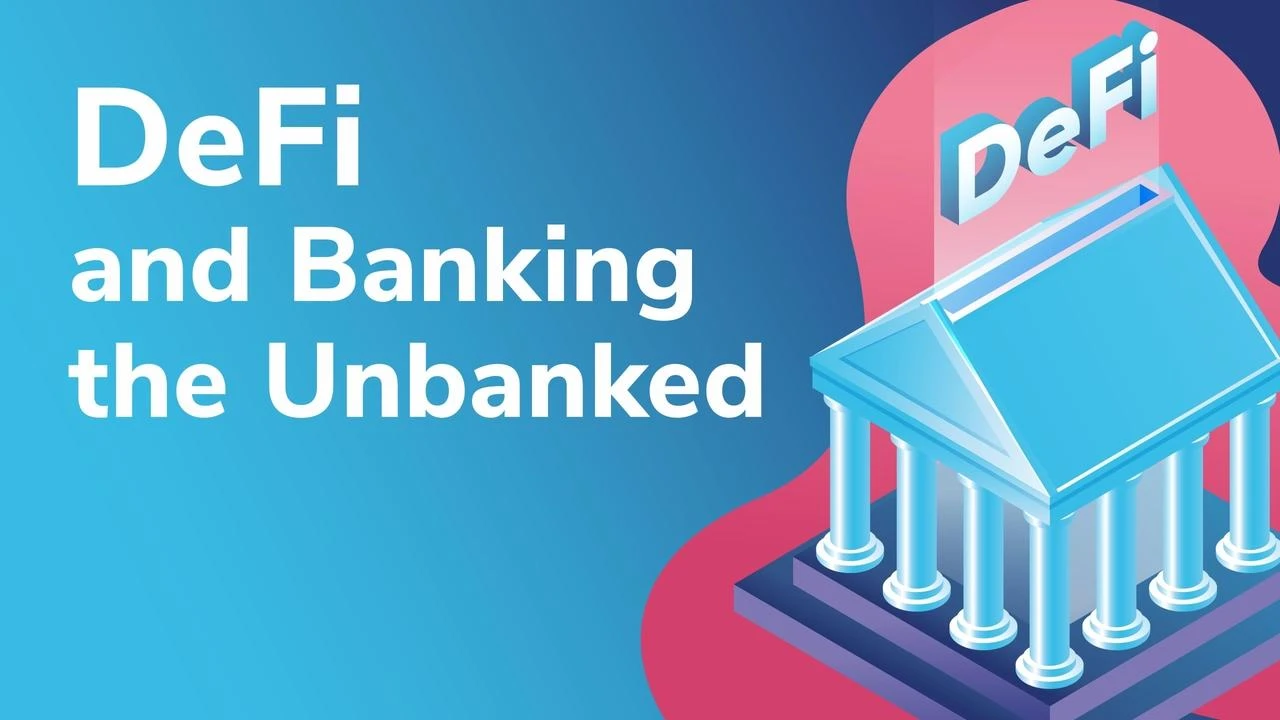Editors note:
Picture丨From the Internet
Editors note:
The emergence of smart contracts provides an important necessary condition for the development of the blockchain, and since then the blockchain world has had a wealth of applications. DeFi is an important part of blockchain applications that cannot be ignored. Many large institutions and outstanding investors have never stopped discussing DeFi. ING Bank has been analyzing and researching the risks and opportunities faced by the DeFi space, hoping to optimize its system application and give an application model.
Not long ago, ING Bank wrote an article entitled Lessons Learned from Decentralized Finance and proposed that if traditional finance and decentralized financial services can be combined, better financial service methods will be produced. The key conclusion. In this in-depth report, the mysteries behind the current DeFi are dismantled in a relatively clear and simple way, and it brings aboutThe definition, attributes, classic use cases of DeFi and the sharing of experiences that can be gained from DeFi.
first level title
Summary
Globally, blockchain and distributed ledger technologies are being used to transform existing traditional financial services, and the so-called gap between centralized and decentralized financial services may lead us to bias their services.
In this white paper, we analyze the characteristics of DeFi and provide lessons for centralized and decentralized financial services.first level title
Introduction
Since its inception in 2017, decentralized financial applications (DeFi) have taken the world by storm.DeFi can be defined as the transformation of traditional financial products into products without intermediaries through smart contracts on the blockchain. In principle, any existing traditional financial service can be transferred to a similar decentralized financial service.
There seems to be a split between traditional finance, which is considered centralized because there are intermediaries managing the books, and DeFi, which is considered decentralized because it provides financial services without intermediaries.
This obvious difference is explained by gray literature (Editors note: not controlled by profit-making publishers, but published by governments at all levels, scientific research institutes, academic institutions, business circles, etc. Fueling further fuel are popular headlines in various hard-to-get print and electronic literature, such as suggesting that DeFi could replace traditional banks. In this white paper, we analyze whether there is a split between traditional and decentralized financial services.
To this end, we first discuss the current perception of DeFi in Section 2. Then, in Section 3, we analyze and discuss 10 common attributes of DeFi.We believe that these attributes can be a double-edged sword. On the one hand, these properties allow the improvement of existing processes and even the introduction of new financial services; on the other hand, these properties may have serious consequences for the entire DeFi system on a global scale.
To further clarify these features, we describe and analyze a DeFi use case in Section 4. In Section 5, we propose 15 lessons for central institutions as well as the DeFi community. Finally, in Section 6, we argue that the goal of DeFi is to improve current traditional financial processes. While it has certainly improved, financial services in DeFi are not without risks or drawbacks.
In fact, here, financial services with central institutions can support DeFi to share experience and advantages in specific services, such as KYC supervision.
In the end, we concluded that traditional financial services and DeFi should collaborate, combining the best of both worlds to create global financial services.
secondary title
first level title
The literature contains various views on what is DeFi, such as a paradigm or a financial model, and various definitions of DeFi can be found. In this section, we will discuss these views and definitions of DeFi.
DeFi is a paradigm. One paradigm can be seen as an example, traditional finance is a paradigm of a financial system characterized by a ledger managed by a central authority.DeFi is another paradigm of the financial system, which is characterized by decentralization and a ledger managed by multiple parties.
DeFi as a financial model.DeFi is a financial model that provides financial services.For example, Brown and Oates explore the design of different levels of government in assisting the poor, discussing both centralized and decentralized approaches ("Decentralized Finance and Administration") to help the poor.
There are many definitions of DeFi. For example, Meegan defines DeFi as"...transforming traditional financial products into products without intermediaries through smart contracts on the blockchain". Another definition is proposed by Gudegeon et al., who believe that DeFi is a"A peer-to-peer financial system that utilizes distributed ledger-based smart contracts to ensure its integrity and security"。
Both definitions identify smart contracts as a key component of DeFi. However, Meegan focuses on the transformation process of traditional financial products, while Gudegeon et al focus on which properties (integrity and security) are achieved.
Popescu defines DeFi as"An ecosystem of financial applications being developed on top of blockchain and distributed ledger technology (DLT)". Here Popescus definition includes both blockchain and distributed ledger technology, while Meegan only considers blockchain, and Gudegeon et al. only consider distributed ledger technology. However, Popescu’s definition of DeFi does not include smart contracts.
Samani makes a clear distinction on what types of blockchains DeFi deploys in the following definition."DeFi executes financial contracts through code running on censorship-resistant and permissionless public blockchains". According to Samanis definition, it does not include public account books with limited authority, and account books with private authority restrictions. In contrast, Popescu and Gudegeon et al include DLT in their definition of DeFi.
According to Musan,"DeFi are DApps that enable interoperable proto-cols specifically for utilizing and trading ERC-20 tokens", DApp is a combination of a smart contract and some form of user interface such as a website. Musan expands on the definitions provided by Meegan and Gudegeon et al., noting that DeFi needs a user interface.
Definitions that summarize the above discussion include:
What is DeFi? (e.g. an ecosystem for financial applications)
What components are used in DeFi? (such as smart contracts)
Which properties are implemented? (e.g. integrity, security)
How are these properties implemented? (Leveraging DLT, via blockchain)
What is DeFi?"What is DeFi?"To provide a broader definition of the problem, in this white paper we use the following definition.
DeFi is financial services that operate on public permissionless blockchains.
Currently, such financial services mostly consist of the following.
Banking services for converting currencies (e.g. issuing stablecoins)
Provide peer-to-peer (or collective) lending platform
secondary title
first level title
text
It can be said,
It can be said,Composability is a defining attribute of DeFi.Gudgeon et al. define composability as"The ability to build a complex, multi-component financial system on top of cryptoassets". A common metaphor in DeFi is"Encrypted Lego"first level title
Composability is the property of a system that its various components can be easily connected. Here, blockchain provides a foundation upon which financial services can be built. According to the above metaphor, the blockchain can be regarded as a warehouse, in which"Lego"Components are financial services, and the benefits of composability are:
Components can be easily connected, unlike siled and centralized payment systems.
However,
However,A major disadvantage of composability is the creation of a system of intertwined debts, which has the potential to lead to financial crises, similar to the 2008 financial crisis, it is unclear how DeFi will manage the potential impact of this composability.
2. Flexibility
Many authors have mentioned flexibility as a property of DeFi, although none of these authors have defined what exactly flexibility in DeFi is.
Flexibility can be defined as the ability to easily modify,We discussed the flexibility of DeFi from the perspective of software and lack of regulation. DeFi is built on open source, which makes software (such as smart contracts) flexible because it can be used by anyone, and it can be copied and adjusted by anyone. Continuing the composable property Using Lego as a metaphor, Lego bricks can also be modified in size, color and shape.
 3. Decentralization
3. Decentralization
3. Decentralization
DeFi literature refers to decentralization as an adjective for the following nouns: validation, network, exchange, business model, governance, and application. However, in most cases, the literature does not go any further to define decentralization.
In the context of DeFi,Decentralization can be described as a convenient way to provide financial services without the need for a trusted intermediary, Catalini and Gans argue that DeFi services do not have a centralized intermediary. They also argue that decentralization can be thought of as digital information validity verification, settlement, and agreement without a central party. However, it is still unclear what constitutes a centralized intermediary, for example, it could be a single entity, but it could also be a limited set of multiple entities.
Popescu also does not further define who is a trusted intermediary (single entity, multiple entities), nor does it define which party trusts this entity. However, Catalini and Gans argue that trust is transferred from a central party to code and consensus rules. This shows that despite the absence of a central party, trust is required. In fact, users of Ethereum firmly believe that the 8 miners will not cooperate, because this will lead to these mines monopolizing the Ethereum network.
Clearly, there is no consensus on what decentralization is, nor what term decentralization applies to in the DeFi literature.
In this white paper,We consider decentralization to refer to technology, namely the provision of financial services on the basis of DLT including blockchain. Here, decentralization refers to multiple parties proposing, verifying, and reaching consensus on ledger updates.
4. Accessibility
Schar believes that,DeFi protocols can be used by anyone. This is consistent with Schars definition of DeFi, that is, financial services are built on public platforms such as Ethereum. However, the broader definition of DeFi also includes DLT, as discussed in Section 2. Since some DLT platforms are permissioned private platforms, access to financial services on such platforms becomes very limited.
However, accessibility on public permissionless ledgers creates a paradox that, on the one hand, countries that currently have limited access to financial services will be able to start using such services. On the other hand, lowering barriers to entry also allows malicious actors in the financial ecosystem to participate and use these services. Clearly, accessibility is a double-edged sword, and businesses should consider what controls are in place to ensure compliance with requirements such as anti-money laundering (AML) and KYC regulations.
5. Innovation
By openly sharing core technologies through open source, platforms like Bitcoin, Ethereum, and Diem allow anyone to (re)use those technologies.As a result, new applications can be built on top of these technologies, enabling innovation in these platforms and applications.
This is in stark contrast to traditional financial institutions, of which, with a few exceptions, we are not aware of any that have open-sourced their core technologies.
We believe this will be a shift in the way central financial institutions think, yet it is currently difficult for these institutions to open source and change their core technology due to complex proprietary software that has been in use for decades.
6. Interconnectivity
Schar distinguishes between functional interconnectivity and technical interconnectivity. In functional interconnectivity, different financial services can work together because they exist on the same platform. In technical interconnection, financial services on two different platforms can work together.

DeFi can enhance interconnectivity. Because centralized financial institutions maintain their own ledgers, one financial service may not be able to interoperate with another, or moving funds between two or more financial institutions may become expensive and cumbersome. However, Chen also believes that due to the lack of interconnection between blockchains, DeFi has not yet achieved full (technical) interconnection and interoperability. Therefore, full functional interconnection and interoperability has not yet been achieved in DeFi.
Interoperability is a high priority in the blockchain community. This shows that if DeFi achieves interoperability, then DeFi has a huge advantage over traditional financial services. It is expected that financial services offered on DeFi platforms can seamlessly interconnect with other financial services.
For example, token transfers from one blockchain to another can already happen anywhere in the world within minutes. This is in stark contrast to traditional payment systems where transferring funds from one continent to another can take days, for example, if a company uses a DeFi payment transfer service instead of a centralized payment transfer service , which can be a strong competitive advantage.
7. Boundaryless
Chen and Bellavitis argue that if financial services are not tied to geographic location or fiat currency, andAnyone in the world can access these financial services, so borderless is achieved.
According to Chen and Bellavitis, traditional finance cannot be truly borderless, because traditional finance is always tied to geographic location or fiat currency. Furthermore, Chen and Bellavitis believe that blockchain-based crypto assets are borderless as they can be used by anyone across the globe. One disadvantage of borderless is that financial services may not be able to comply with anti-money laundering and KYC regulations. Popescu even believes that AML and KYC are"the concept of."the concept of.
In contrast, we believe that anti-money laundering and"KYC regulation is indeed a concept suitable for the DeFi ecosystem. The current lack of regulation and discussions about anti-money laundering, KYC, and the early days of DeFi cannot be a reason to exclude these concepts from DeFi.
Instead, large financial institutions can bring their knowledge and experience of anti-money laundering and KYC to this discussion and will embed these concepts into DeFi. We expect large corporates to adopt DeFi as well once this discussion comes to fruition.
8. Transparency
Schar believes that the transparency of data on the blockchain is an opportunity for DeFi. Transparency can apply to smart contracts or financial data. In both cases, anyone can observe the contents of smart contracts or financial data. The transparency of smart contracts allows anyone to review the code of smart contracts. Therefore, any individual can choose to use different financial services based on their review of the smart contract code.
Schar also believes that the transparency of financial data can alleviate the financial crisis. However, we believe that mitigating the financial crisis alone is not enough to make financial data transparent. On the contrary, privacy is a human right, and if only a single financial system can provide smart contracts and transparency of financial data, then this financial system does not seem to comply with this human right.
While some efforts are currently underway to strengthen the privacy of public blockchains,However, we believe that cooperation between traditional finance and decentralized finance to provide financial services that protect the privacy of their users is a good solution.
 9. Automation of business processes
9. Automation of business processes
Smart contracts can automate business processes. As Popescu pointed out,As business processes are automated, it becomes more cost-effective to execute those business processes.Once a smart contract is created, two parties can transact without requiring any external agency, increasing autonomy.
However, both parties aiming to do business with each other are dependent on the creator of the smart contract, which means the presence of an external agency (i.e. the coder of the contract) must be present. Furthermore, if the smart contract is not functioning as expected, then three problems arise:
Who is responsible for the correct functioning of the smart contract?
How can transactions be reversed in an immutable blockchain?
How two parties can ensure that the next smart contract works as expected
In order to mitigate the risks associated with the use of smart contracts, additional measures must be taken that will increase the cost of doing business through smart contracts. It is an open question whether these costs outweigh the costs of providing services by centralized institutions.
Contrary to Popescu’s view that DeFi is more cost-effective, Chen believes that traditional finance may reduce costs. Obviously it will be an open discussion whether DeFi is really more cost-effective than a centralized institution.
10. Finality
The finality of transactions is achieved under the assumption that eventually, all network nodes will receive the transaction and agree on its validity. Furthermore, assumingOnce a transaction is stored on the blockchain, it cannot be reversed or modified。
However, if we assume that blockchains can achieve immutability, there are challenges, two known challenges are rigidity and inflexibility. Since DeFi is built on the blockchain, DeFi also inherits these characteristics. This can hinder smart contract testing, learning and discovery. In addition, another impact of the blockchain is that when the network does not reach a consensus, the update progress of the platform may stagnate.
Editors note: DeFi, a new paradigm of decentralized financial services, is a transformative force for commerce, and we analyze its ten attributes and discuss their pros and cons. We believe that the combination of DeFi and centralized financial services is conducive to the development of the financial system as a whole. In the following, we will focus on the classic cases of DeFi and the experience we can gain from DeFi, so stay tuned.










